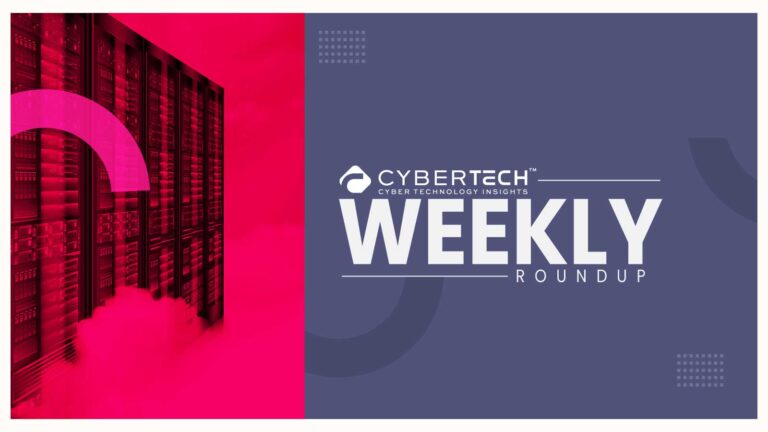If you imagine scams as the “dark side” of technology, you would not be far from the truth. While there are new advancements in cloud services, AI-driven chatbots, or contactless payments, cybercriminals are one step ahead, devising ways to take advantage of the new tech. Although the methods might appear different, the goal remains the same: deception. The fact that today’s scams have become so professional and engineered to a high level is what makes them quite frightening. For instance, they do not only rely on phishing emails with many mistakes as they used to do in the past. We are witnessing instances where AI-generated voices pretend to be managers, very detailed-targeted smishing campaigns, and deepfake technology to commit financial fraud or scam. To make it short, the scams are designed with the same level of sophistication as the technology they target.
This write-up will delve into the new scam methods, discuss their effectiveness, and, most importantly, show you how to be a step ahead using tried and tested Zero-Trust principles, AI-enabled threat prevention, and uninterrupted monitoring.
Lessons from the Field: Competitor Coverage at a Glance
If we want to establish the unique angle of this article, it would be wise to first understand how others are approaching the topic of scams.
Dark Reading mainly emphasizes the terror evolution of the attackers, most of the time, using technical exploits as examples (e.g., ransomware-as-a-service). The style of the writing is technical, and sometimes, it may not provide enough practical advice for security professionals.
SecurityWeek tells incident-driven stories, such as illustrating data breaches that happened through phishing, but it hardly provides lessons that can be used for prevention.
CSO Online uses a CISO-centric viewpoint, placing scams within the context of risk management strategy, yet it does not go into much detail about the engineering aspects frequently.
SC Media focuses on compliance and regulatory aspects, which are very important but might sound distant or abstract to tech practitioners.
InfoSecurity Magazine focuses on consumer issues, e.g., explains scams that target retail banking users, but little is spoken about enterprise-scale attacks.
Gap identified: None of these outlets seems to manage to successfully combine executive-level strategy with engineering-grounded solutions. Functionalities of Cyber Technology Insights are impeccably positioned to accomplish that, bridging leadership priorities with hands-on defenses.
The New Face of Scams: What’s Really Happening
1. AI-Powered Phishing and Deepfake Social Engineering
Do you recollect the times when one could easily identify a fake email by just one spelling mistake? Those times have gone. Present-day scammers craft phishing messages flawlessly with the help of large language models, and these are tailored for a particular position. To make it even worse, the number of deepfake audio scams is also increasing rapidly. Visualize hearing your CFO’s voice requesting an immediate wire transfer; that’s what occurs in real businesses. See Proofpoint’s Human Factor reports for the exact figures.
Why it works: People believe what is presented and sounds truthful. AI has made it harder to distinguish between the two.
2. Smishing and Quishing: Attacks on the Go
We are always with our phones. The cybercriminals are savvy enough to realize it. Smishing (SMS phishing) has now evolved to include links that seem to be delivery notifications or HR system alerts. The introduction of quishing is the latest development in which scammers use QR codes embedded in fake invoices or flyers to dupe victims.
Why it works: The hook is that it is convenient. People seldom question a quick tap on their smartphone.
3. Business Email Compromise (BEC) 2.0
Fake invoices were the key element of traditional BEC. These days, attackers utilize compromised credentials, lookalike domains, and real-time surveillance of executive communications to carry on their fraud. As these scams are closely integrated with normal business processes, it is very challenging to detect them. The FBI’s IC3 2024 Annual Report shows large, multi-billion-dollar losses from internet crime and confirms BEC remains a top fraud type.
Why it works: The scam takes advantage of the trust that businesses have in their communication systems.
4. Crypto and Investment Scams
The incredible rise of cryptocurrency and online trading has attracted a lot of scammers. Currently, AI-powered investment platforms pretend to be real financial services with the help of a dashboard, including the implementation of a fake ROI calculator. The FBI and other agencies reported large crypto-loss figures in 2023–2024.
Why it works: Humans are so hardwired to seek quick gains that they tend to overlook the scam signs.
5. Cloud Account Hijacking and Shadow Access
Cyber-attackers are targeting the identity and access management weaknesses that happen when companies move their workloads to the cloud. Examples of these scams are fake MFA prompts and malicious OAuth apps that trick employees into giving them permanent permissions.
Why it works: Shadow access is almost invisible because employees usually think that “login requests” are part of their daily routine.
Staying Protected: Practical Guidance
Now that we are aware of their tactics, let’s consider the effective defenses.
1. Adopt Zero-Trust Architecture
Stop believing that anyone inside or outside the network can be trusted. Zero-Trust means that every time there is an access request, it has to be verified every time, using the fewest privileges and policy-driven access. Gartner’s Zero Trust guidance (and their forecast that many orgs will move away from VPNs) is a good anchor for this recommendation.
Put on multi-factor authentication (MFA), preferably adaptive MFA.
Use micro-segmentation to stop lateral movement.
2. Embrace Continuous Threat Exposure Management (CTEM)
It is not practical to do a static vulnerability assessment just once a year. CTEM goes through cycles of discovery, prioritization, and remediation nonstop.
Bring the attack surface management instruments into your system.
Perform threat exercises in real-time to figure out the tricks that may help villains to enter your habitat.
3. Leverage Extended Detection and Response (XDR)
The point of view is that trickery is mainly the net where the frauds seize their beginning. XDR solutions broaden the reach of the endpoint, network, and cloud telemetry for spotting the kinds of patterns that are not easy to find in completely isolated research units.
Allow the correlation of alerts from different layers.
Combine XDR with the automated incident response playbooks for the smoothest way of handling emergencies.
4. AI and ML-Powered Defense
Indeed, AI is used to come up with scams; however, it is still a defense tool. Machine learning models can call attention to odd transaction requests, detect that the voice is fake, and notice the abnormality in the login behavior.
Bring the behavioral analytics for insiders to the fore.
Help the ML-driven SIEMs to keep up with the latest fraud trends by continually updating their training data.
5. Strengthen Cloud Security Resilience
Given that the scams have changed to target identities, the cloud is fortified with:
- Privileged access management (PAM)
- OAuth permissions that are monitored continuously
- Security posture management for the cloud (CSPM)
Back to Your Place
Just stop for a moment. Can you tell the difference between a fake Teams meeting invite and a real one? Or a QR code on a conference badge that installs malware without you noticing? Scams become successful through their speed and the victim’s distraction. Busy professionals are the victims most time of this because we normally believe too quickly when we see something familiar.
By employing Zero-Trust tenets, being reliant on AI-powered countermeasures, and having continuous surveillance as a built-in feature, you turn your approach from a reactive defense to a proactive resilience.
And resilience, as opposed to scams, keeps on growing along with you.
Conclusion
Fraud, over the years, has changed its nature, from poor fraudulent clumsiness to AI-created, cloud-enabled, and extremely targeted scammers of the busiest professionals and the most valuable companies. However, the countermeasures are equally complicated: Zero Trust architectures, XDR, AI-supported anomaly detection, and constant monitoring.
The main point that should not be omitted from this discussion: Being safe from cyber-attacks is not the ultimate goal, but rather the capacity of the team to instantly recognize, block, and neutralize the threat.
FAQs
Q1. How can I quickly verify if an email is a phishing attempt?
Look at the domains of the senders carefully, hover over the links without clicking them, and if the email is asking for something, verify the request through another way, such as a phone call.
Q2. Are QR code scams really that common?
Yes, indeed. Proofpoint’s 2025 Threat Report
Reports the year-over-year growth of phishing attempts using QR codes is 61%.
Q3. Is MFA enough to stop modern scams?
MFA is definitely necessary, but it is not enough on its own. The combination of adaptive MFA and zero-trust segmentation is more effective.
Q4. How do deepfake scams get detected?
AI-based voice and video distortion tools identify the slightest changes in frequency, matching of lip movement, and the pace of speech that human ears cannot.
Q5. What is the best defense for cloud-based scam attempts?
Identity permissions must be continuously monitored, least privilege strictly enforced, and CSPM integrated for real-time visibility.
For deeper insights on agentic AI governance, identity controls, and real‑world breach data, visit Cyber Tech Insights.
To participate in upcoming interviews, please reach out to our CyberTech Media Room at sudipto@intentamplify.com.







